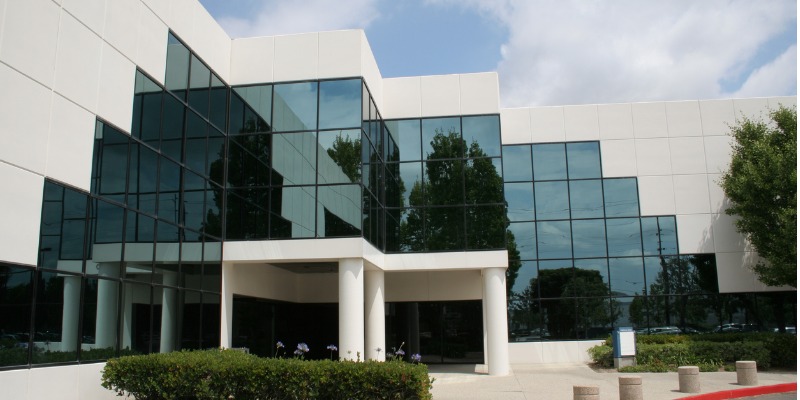Smart Office Buildings for Better Occupancy and Lease Rates
With cap rates rising and altering demand for office assets, it is critical owners and operators do everything possible to establish and maintain a competitive advantage.
There’s a fight to quality occurring where office tenants and investors are giving preferential treatment to Class A assets. Given favorable lease rates and plenty of available space and options, tenants opt for the best amenities, communication technologies, indoor air and environmental quality, and energy/water efficiency.
In this article, we’ll look at the state of the office market, how smart buildings generate greater value for all stakeholders, the four components of a smart office design, and how to implement the strategy for new and existing builds.
State of the office
Office bore the brunt of the remote working trend spurred on by the pandemic. The U.S. National Bureau of Economic Research reported that remote working led to a long-run decline in office valuations of $453B, or just under 40%. During the height of the pandemic, some organizations stated working from home fostered an improvement in productivity.
However, a recent survey by Microsoft of 20K+ professionals found that 85% of leaders say the shift to hybrid work has made it “challenging to have confidence that employees are being productive.”
Meanwhile, 73% of workers indicate they need a “better reason to go into the office than just company expectations.” It’s a controversial issue as many workers resist the return to the office and are fighting for the personal benefits of WFH (Work From Home).
Proponents of getting back to the office either full-time or partially include Tesla, Salesforce, Goldman Sachs, Netflix, Amazon, and many more. While there are viable technological and collaborative strategies to make remote work equally productive, the sentiment of many leaders is driving a return to the office. Employers cite the need for in-person collaboration and the onsite collective spirit that drives creativity and productivity.
As the health crisis becomes part of the operating environment, many public and private organizations are pushing for a return to the office. Consequently, demand is ticking up for office assets.
The value and components of smart office buildings
If employer attitudes to remote work are already changing and office leasing is improving, why bother making our office building ‘Smart?’
First and foremost, it’s about providing unique, differentiating value to the end user — the tenant paying the lease and driving revenue that fuels and justifies our operations. Here, we’re talking about employers looking at the bottom line in terms of the space’s conduciveness to collaboration, creativity, and productivity, as well as operational efficiency.
Second, going smart appeals to ESG- and margin-conscious investors and checks boxes for associated criteria. A new survey by CBRE of 500 market stakeholders (investors) found that 53% of respondents favored deals incorporating smart technology. Likewise, 49% indicated the omission of smart features would have an adverse impact or be a deal breaker.
What makes a building ‘Smart?’
Deloitte defines smart buildings as “Digitally connected structures that combine optimized building and operational automation with intelligent space management to enhance the user experience, increase productivity, reduce costs, and mitigate physical and cybersecurity risks.”
Additionally, intelligent buildings achieve these four objectives:
- Uniting people in digitally connected spaces.
- Allowing occupants more control of building systems.
- Enhancing digital collaboration amongst in-office and remote workers.
- Facilitating the conservation of energy, water, space, and labor.
Current communications and building system technologies create value for tenants and investors, supporting a competitive advantage in a regional leasing and investment market. It gives businesses further justification and incentive to come back to the office and facilitates hybrid working models.
Specifically, tenants favor buildings equipped with fiber optic, modern teleconferencing equipment, and smart building systems to control doors, security, HVAC, and more.
Smart building systems also ensure thermal comfort by allowing tenants/users to tailor their climate zone to individual or group preferences. Additionally, energy isn’t wasted heating or cooling unoccupied areas. Light, movement, and hydrostatic sensors and monitoring systems further minimize consumption and provide optimal indoor environmental quality (IEQ).
And aside from the monetary considerations, providing tenants with a space that ideally suits their needs — based on their input and feedback — fosters tenant loyalty and lower turnover rates. Smart offerings make tenants feel valued and that you’re attentive to their needs.
Funding and planning smart features and improvements
Whether you’re working with an existing Class B/C asset to upgrade and reposition or building from the ground up, a smart design requires capital and planning.
With prevailing monetary policy and rising interest rates and cap rates, conventional financing at high LTVs and refinancing aren’t ideal options (as they would be under other conditions). The circumstances favor sponsors that can raise — initially or subsequently — the equity to fund the additional costs of smart and sustainable technologies.
Institutional and accredited investors with dry powder (liquidity) are currently in the best position to implement or fund a smart building design or improvement strategy. The need for equity underscores the previously noted value/leverage that going smart provides in attracting investors mindful of ESG considerations.
A principal strategy to ensure results and control cost/time is the integrative design process — a central component of sustainable design methodologies.
It involves planning the implementation of smart building technology from the outset of the project and holding a design/re-design planning meeting with the owner/operator, investors, tenants, engineers, and all other parties involved in the process to gather input and feedback.
An integrative process ensures the requirements and preferences of the end user and owner are considered and that all design team members are coordinated. The result is that the project is more likely to be completed on time, within budget, marketable, and generate expected efficiency, market lease rates, and NOI.
Smart office buildings: A sustainable market position
A viable office investment and operating strategy is becoming contingent upon offering Class A assets with smart communications and building system technology.
As tenants and investors lean toward higher-quality, lower-risk, efficient assets, operators and sponsors answer the call by developing and repositioning assets to carve out a sustainable competitive advantage and market position.









